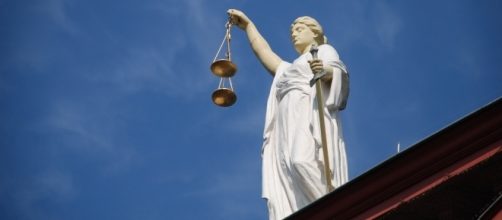Saying once again that courts are threatening the security of the US and saying multiple times how sad it was, apparently that there were legal checks and bounds on his actions, and he was amazed and disgusted hearing the legal arguments which took place the evening before on the Muslim ban which he now says is not a ban and which the Administration insists is not limiting Muslims.
Trump didn’t understand what’s happening
Beginning by saying, “I don’t like to call court's biased, but,” president Trump went on to say, “If these judges wanted to help the court in terms of respect for the court they would do what they should be doing the right thing [supporting the President’s travel ban.]"
President Trump read Statute 1182, the law establishing a president’s legal right to ban any immigrants but he left out the severe limitations on that right as imposed by the later 1965 Immigration and Nationality Act of 1965 (H.R.
2580; Pub.L. 89–236, 79 Stat. 911, enacted June 30, 1968) or Hart-Celler law, which abolished the national quota system and specifically banned discrimination based on the country of origin, race, orientation, or religion of the immigrant or refugee.
Repeatedly saying that the legal arguments, which were broadcast live on TV, had nothing to do with the case about his ban (President Trump didn't use that word), he demonstrated that he had no idea what the hearing was about. The judges on the appellate court are not deciding if he had a right to do what he did, nor if it was constitutional.
Instead the three judge court panel was hearing technical legal arguments about whether or not to stay (halt) the Seattle-based Federal judge’s ruling enforcing a Temporary Restraining Order.
No court is hearing arguments about legality of President Trump’s non-ban ban on all Syrians from entering the country, a 120 day ban on new refugees from any place, and a 90-day ban on any new visas for anyone from six other predominantly Muslim countries.
The basic arguments against the Trump Executive Order is that because it states a preference for non-Muslim applicants, it bans people based on their religion alone.
You will hear this argument referred to as the Establishment argument because it centers on the Constitution’s ban on the “establishment” of a state religion.
The legal arguments for voiding the TRO revolve around two technical questions about whether there is a case which can go forward and whether the states which applied for the TRO have what is called “standing” or the legal right to ask for the TRO.
The appellate court is not deciding if the Executive Order is legal or constitutional which is why the oral arguments were all about technical legal points, and not the actual ban.
Another argument highlighted by the judge's questioning the Administration’s lawyer concerned actual risk and the Administration had no rebuttal when a judge simply asked, isn’t it true that no one from any of the banned countries has ever killed an American in the US?
Speaking to police
Just yesterday President Trump insisted that the murder rate was the highest in 47 years. The FBI reports show that it is nearly the lowest it has been since national records were kept. Today he spoke again about how dangerous the country is and how we need more police funding but he had apparently been told that his earlier statement was completely false, so he instead cited actual facts - that there was a recent small up-tick in the number of murders.
What Trump didn’t do was correct his completely false statement of Tuesday, but he did go on to talk about his great wall.
FBI reports there were 14,196 murders in the US, a 4.4% decrease from the year before, and a 7.8% decrease from 2009, and a 12% reduction in the 2004 numbers. all of which was under the Obama administration. 2014 recorded the lowest number of murders in the US in 50 years, despite increasing population. There was a slight jump coinciding with the start of the 2016 election campaign making 2016 second lowest.

